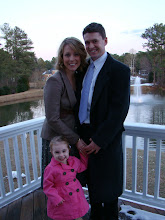Virginia is known for its deep American history. Having lived here nearly four years, I have come to fully embrace my status as a Virginian and have learned to appreciate the stories of the past that define my "Old Dominion" state. Recently, a good friend and I were lamenting how little we knew about some of the farms and homesteads that surround us. "Somebody needs to write a book," she said. And while an undertaking of that enormity is not exactly in my near future, I set out this weekend to get some pictures and learn a little bit about some of the country churches just minutes from my home.
Waddell Memorial Presbyterian Church, circa 1874, is located in Rapidan, Virginia. Built in a Carpenter's Gothic style, the church was named in honor of Rev. James Waddell, a local blind preacher who became a key player in the battle for religious tolerance during the Colonial times.
One of my favorite little country churches, Emmanuel Episcopal was also built in 1874 in Rapidan. In 1902, Teddy Roosevelt attended Sunday services here with his wife. The church has flooded twice, most recently in 1996, whereafter the building was moved from its original foundation next to the Rapidan River, to the location you see today.
This dilapidated church is located in Culpeper County. Although it no longer has an associated name, the 1908 structure was called the Winston Family Chapel. In perfect Romeo and Juliet fashion, a Winston daughter married a member of the dueling Somerville family. Over the generations, the Winston family has died off, and the remaining Somerville heir no longer claims the chapel. A local historical society hopes to restore this beautiful stone structure.
South Plains Presbyterian Church is located in Keswick, VA. Built in 1819, this small church of only forty members still has original oil lamps hanging on the walls.
Grace Episcopal Church is by far my favorite little church on the drive from my house heading into Charlottesville. Also located in Keswick, Grace was one of only six colonial churches in Virginia when it was constructed in 1745. The foundational stones of the 32x24 structure can still be seen by the large oak trees in front of the present day church, built in 1855. Its first rector, Rev. James Maury, educated Thomas Jefferson in the mid-1700's out of the classical school he ran in his home. In the earliest years, congregants were asked to financially support the ministry with cash or by a levy of tobacco. Today, Grace Episcopal Church hosts an annual Blessing of the Hounds ceremony held on Thanksgiving Day. Fox hunters, horses and hounds, and local parishioners gather to offer prayers and thanksgiving in the front lawn.
So, next time you drive an all-too familiar route in your own hometown, take note of the places you'd like to learn a bit more about and then do your research. The history is there for the taking and best of all, it's free.











No comments:
Post a Comment